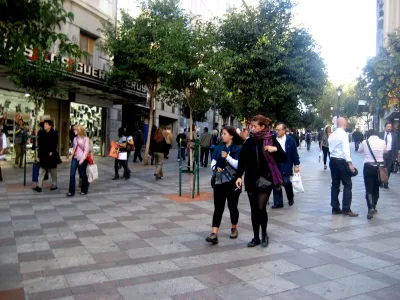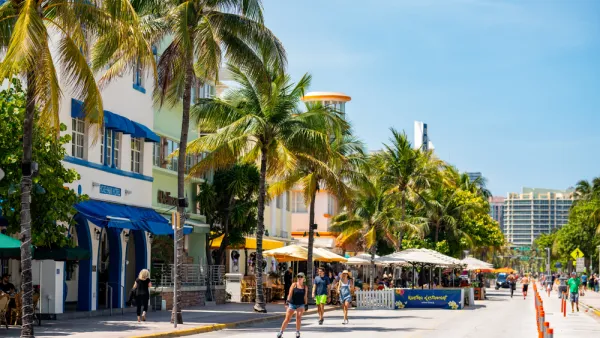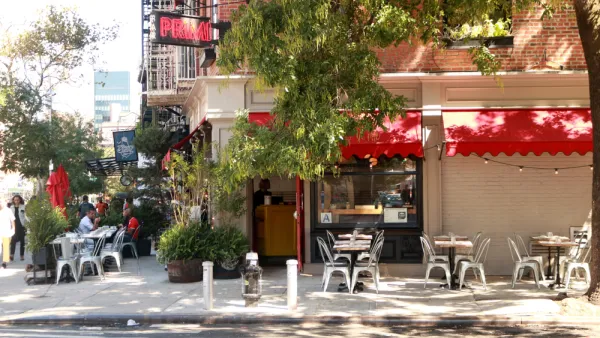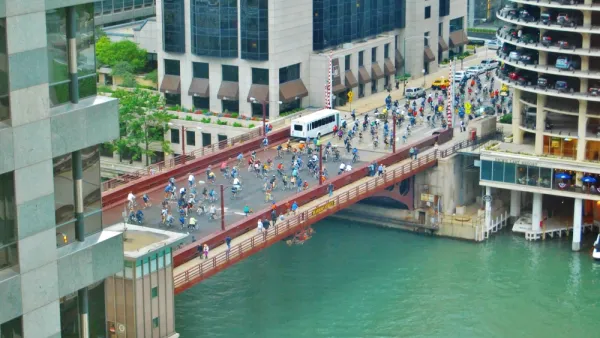The successes and failures of past pedestrian malls can inform the future of pandemic-induced "open streets" programs.

The COVID-19 pandemic, writes Stephan Schmidt, emphasized the importance of public, outdoor space as cities around the world opened previously car-centric streets to pedestrians and reimagined street space as more than a way to move cars from place to place. "Alternatively referred to as slow, open, shared or active streets, many of these pandemic-inspired closures were successful, and several cities opted to continue these street changes over the course of the summer."
Now, "as summer ends and cities continue to reopen, local officials will need to decide whether to revert to the status quo or make the often-popular pedestrianized corridors permanent."
Describing the history of American pedestrian malls and their rise and fall during the 1960s through 1990s, Stephan Schmidt draws comparisons to today's pandemic streets, taking lessons from the successes and failures of the past to inform our current car-free projects. Cities, Schmidt writes, can "utilize design interventions to create more desirable pedestrian environments" and support car-free areas.
Based on his research, Schmidt describes four elements of successful pedestrian malls. These include "creating a sense of enclosure and requiring the use of ground-floor windows to increase transparency," protection from weather and varied seating options, visual appeal created through landscaping, and programmed activities. He also recommends that pedestrian malls seek connections with adjacent properties to reduce a feeling of isolation and increase pedestrian traffic.
"Many downtowns and central business districts now have more full-time residents than they did in decades past, a density boost that bodes well for this new wave of shared streets. Officials must weigh many factors as they bring their urban centers back to 'normal,' but they should remember that, for many, normal means experiencing the city via a car-free public space."
FULL STORY: Lessons From the Rise and Fall of the Pedestrian Mall

National Parks Layoffs Will Cause Communities to Lose Billions
Thousands of essential park workers were laid off this week, just before the busy spring break season.

Retro-silient?: America’s First “Eco-burb,” The Woodlands Turns 50
A master-planned community north of Houston offers lessons on green infrastructure and resilient design, but falls short of its founder’s lofty affordability and walkability goals.

Delivering for America Plan Will Downgrade Mail Service in at Least 49.5 Percent of Zip Codes
Republican and Democrat lawmakers criticize the plan for its disproportionate negative impact on rural communities.

Test News Post 1
This is a summary

Test News Headline 46
Test for the image on the front page.

Balancing Bombs and Butterflies: How the National Guard Protects a Rare Species
The National Guard at Fort Indiantown Gap uses GIS technology and land management strategies to balance military training with conservation efforts, ensuring the survival of the rare eastern regal fritillary butterfly.
Urban Design for Planners 1: Software Tools
This six-course series explores essential urban design concepts using open source software and equips planners with the tools they need to participate fully in the urban design process.
Planning for Universal Design
Learn the tools for implementing Universal Design in planning regulations.
EMC Planning Group, Inc.
Planetizen
Planetizen
Mpact (formerly Rail~Volution)
Great Falls Development Authority, Inc.
HUDs Office of Policy Development and Research
NYU Wagner Graduate School of Public Service





























